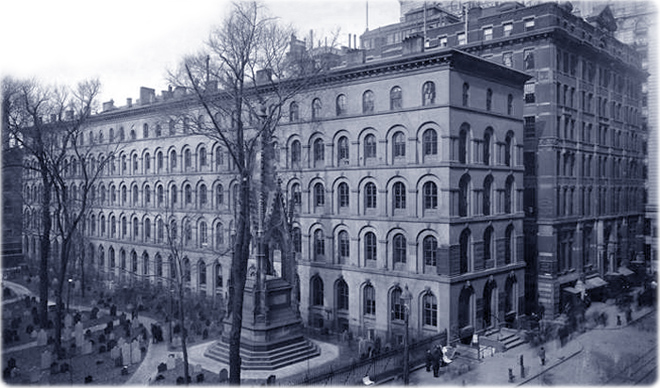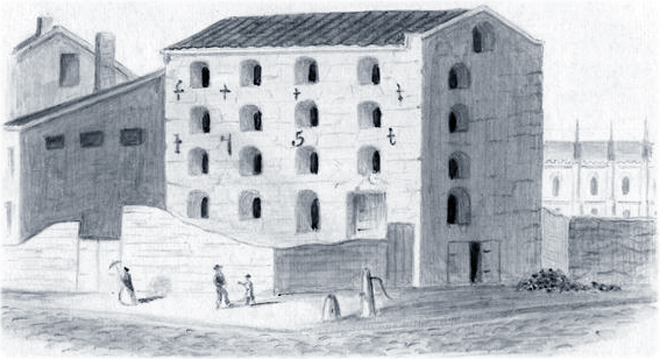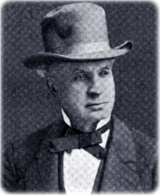
Old Trinity Building
The Old Trinity Building, at 111 Broadway, was erected in 1853, next to the Trinity Churchyard and fronting three streets: Broadway, Thames and Trinity Place. It was owned by Horace Brigham Claflin (1811-1885), head of the largest wholesale dry goods house in the United States and one of the founders of the Continental Bank and Trust Company.
The third temple of Trinity Church was consecrated in 1846. The building had no ownership by the Corporation of Trinity Church. Formerly, the site housed two and three structures. An old tavern building was among them. There was a two-story building on the site, facing Broadway, before 1830 and a three-story building around 1830. The New York City Directory (1843 /J. Doggett Jr.) indicates the All Nations' Hotel at 111 Broadway. The New England Hotel was built on the site about 1844. Back of it was a soda water factory. According to the New York Times (November 23, 1902), when Mr. Claflin started to put up the building he had to pay a small sum to the tobacconist John Anderson for his lease of a portion of the building formerly on the site. The 18th century Van Cortlandt's sugar house, at the western end of the property, was demolished in 1852.
This historic office building, constructed in 1853, was five stories high with a cellar. It was a huge building for its time, occupying the entire strip from Broadway to Trinity Place. The architect was Richard Upjohn (1802–1878), the same that designed the Gothic Trinity Church and many other historic buildings in the United States. The Old Trinity Building was built of a yellowish tinge brick brought from Milwaukee, Wisconsin, all the way by water. Milwaukee bricks was known for their beauty and durability. The building had air and natural light on four sides and there was an open fireplace in every room.
The architect Richard Upjohn moved his office into the building. He was one of the founders and first president of the American Institute of Architects, that was established in the Trinity Building in 1857.
The firm Claflin, Mellin & Co. occupied part of the building upon its completion, with entrance was near Trinity Place in Thames Street. In 1860, Mr. Claflin began the construction of a large store in Church and Worth streets and he move to the new building in 1861, then he sold the Old Trinity Building to W.H. Russell and D.B. Fearing, both engaged in dry goods business in Pine Street, and James Cook Ayer (1818–1878), a pharmaceutical chemist and patent medicine businessman, one third each. Later the Ayer estate bought the Russell interest.
In November 1868, a fire broke out causing some damage to the building, including the fall of the whole ceiling and timbers over the main upper hall. Elevators were put in during the restoration of the building. Other than that, the old Trinity Building stood more than 50 years without any outward sign of change.
The Old Trinity Building was purchased in 1902, emptied on April 30, 1903 and razed in the early 1904.

On the right, the Old Trinity Building between the Trinity Churchyard (left) and the Boreel Building, on the right. Photo about 1900, from the Museum of the City of New York.
Illustration published in 1831 showing a 3-story building on the site of the Trinity Building. Enlargement of its sign is at top of the picture.
The Van Cortlandt's sugar house stood on the western end of the property and was demolished in 1852. Trinity Church is seen behind the building. Illustration depicted the building between 1846 and 1852 (source: The New York Public Library).


Horace Brigham Claflin (1811-1885) built Trinity Building.

|
Copyright © Geographic Guide - Historic Buildings of NYC. |
Old Trinity Building